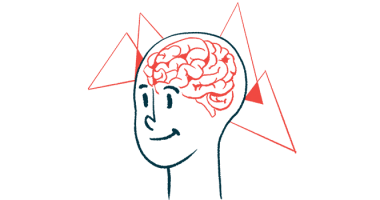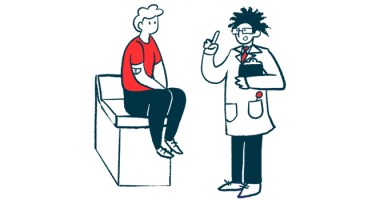Certain mutations linked to earlier wheelchair use in Becker MD
Disease damage more severe with exon 45-49del mutation, study finds
by |

People with Becker muscular dystrophy (BMD) caused by specific mutations tend to be younger when they first start using a wheelchair, a new study reports.
The study, “Natural history of Becker muscular dystrophy: a multicenter study of 225 patients,” also provides new insights into the frequency of heart health problems, breathing issues, and behavioral abnormalities in BMD. The work was published in the Annals of Clinical and Translational Neurology.
Becker MD is caused by mutations that lead to the production of too little or abnormal dystrophin, a muscle protein. BMD is usually less severe than Duchenne muscular dystrophy, a related type of muscular dystrophy caused by mutations that prevent virtually any dystrophin protein from being made.
Still, there’s a lot of variation in symptom severity and progression rates from person to person with BMD.
Study into natural history of Becker muscular dystrophy in patients in Japan
In this study, scientists reviewed clinical data collected from 225 people diagnosed with BMD who were treated at centers in Japan.
Their goals were to describe the natural history of the disease — that is, how BMD tends to progress in the absence of treatment — as well as to identify potential connections between specific BMD-causing mutations (genotypes) and clinical disease characteristics (phenotypes). They noted that this was one of the first studies of its kind to be done in Japan.
Patients in the study ranged in age from 1 to 81 years old. Most patients (60%) received a disease diagnosis after they started to experience muscular symptoms. Another 32.4% of patients were diagnosed before developing any notable symptoms, because medical tests revealed high levels of the muscle damage marker creatine kinase (CK). Another 16 participants (7%) were diagnosed after complications affecting the heart or the central nervous system (CNS; brain and spinal cord).
Slightly more than half of study patients (53.8%) had trouble walking, and about 1 in 4 (27.1%) used a wheelchair to get around. Their mean age at the start of wheelchair use was 36.5.
Statistical analyses showed that patients with higher CK levels at an initial evaluation tended to be younger when they started using a wheelchair, suggesting “that CK levels may be a prognostic factor in motor function in patients with BMD,” the researchers wrote.
About 15% of these patients showed symptoms of heart failure, and roughly 1 in 3 had abnormal results on an electrocardiogram (a measure of electrical activity in the heart).
“In our data, echocardiography showed that 40% of patients with cardiac dysfunction were under 30 years old. Therefore, cardiac assessment should be conducted from an early age,” the researchers wrote.
Only about 1 in 20 patients (6.7%) relied on a ventilator to help them breathe, beginning its use at an average age of the mid-30s. Measures of lung function in the overall group didn’t show clear associations with age or the need for wheelchairs, the researchers noted.
Approximately 1 out of every 6 patients (16.9%) had developmental or intellectual abnormalities, including autism spectrum disorder or attention-deficit hyperactivity disorder (ADHD). Autism spectrum disorder was more common in BMD patients than in the general Japanese population, but ADHD was present at comparable rates, the researchers wrote.
About 1 in 10 had psychiatric diagnoses like depression or panic disorders, which is generally similar to the overall rate for these issues in the general population in Japan. Seizures were present in 8.4% of the patients.
Heart failure signs began at younger ages with exon 45-55del mutations
Analyses of genotypes and phenotypes indicated that patients with a particular BMD-causing mutation called exon 45-49del tended to have severe muscle damage. They also were generally younger when they started using a wheelchair compared with patients with other types of mutations.
No patient carrying the exon 45-47del or exon 45-55del mutations needed a ventilator to help with breathing. While CNS complications like seizures were not reported in patients with exon 45-55del mutations, no significant differences were seen in how common they were among the other mutation groups. Patients with 45-55del mutations were younger at the onset of heart failure than those with exon 45-47del.
The scientists stressed that factors like exercise, corticosteroids, rehabilitation, and obesity may influence the results and make it difficult to draw clear comparisons, so further research is needed to clarify genotype-phenotype associations in BMD.
They noted that understanding these connections might be helpful not only for caring for people with BMD, but also for understanding the effects of exon-skipping therapies for Duchenne muscular dystrophy, which allow the production of a shortened version of dystrophin protein similar to what’s seen in BMD.
In conclusion, “the results of this study may provide a more comprehensive natural history of BMD. In addition, our data may stimulate new studies on the structure and function of dystrophin proteins,” the investigators added.








